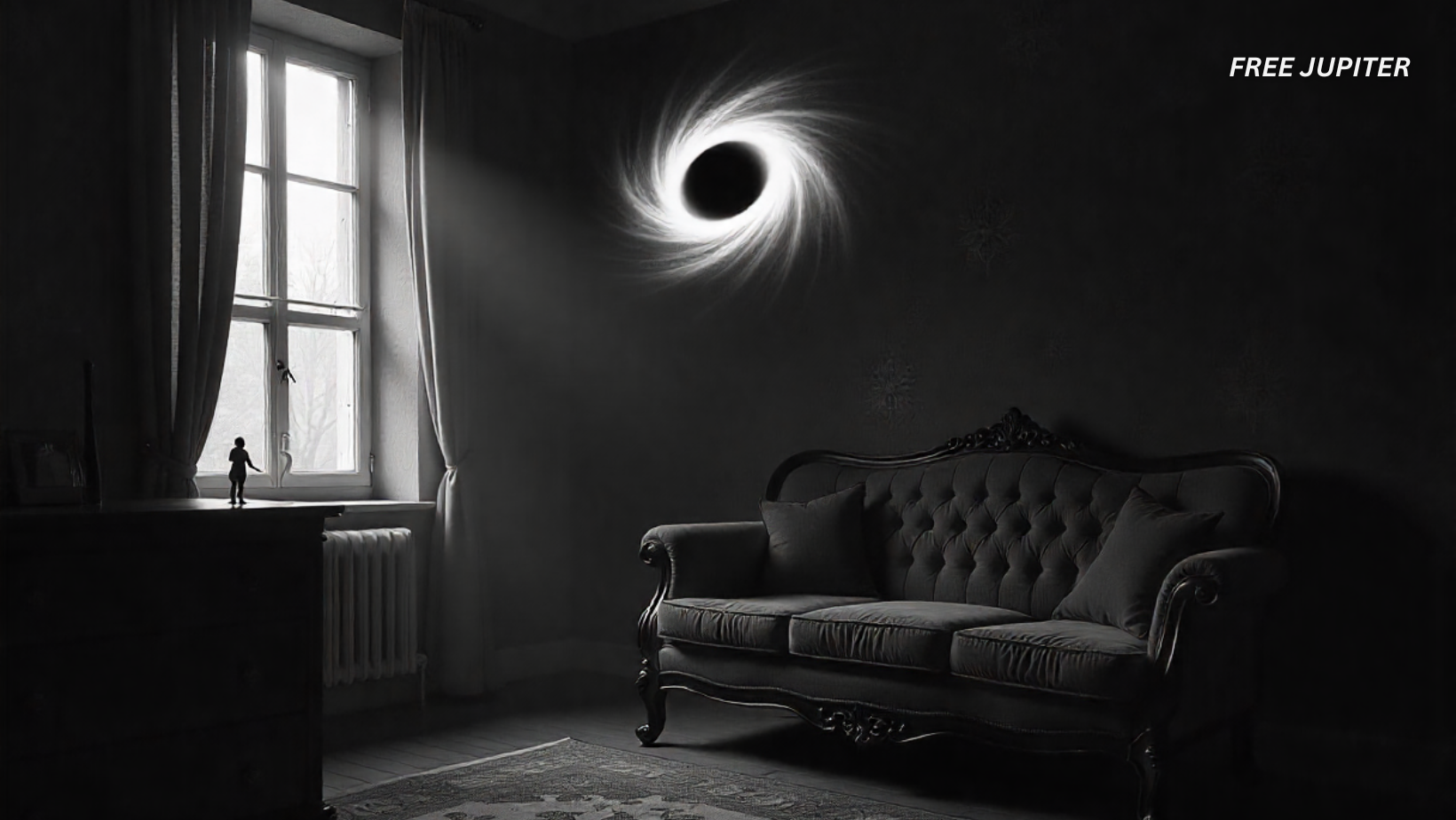Friendly Note: FreeJupiter.com shares general info for curious minds 🌟 Please fact-check all claims—and always check health matters with a professional 💙
Imagine sipping your morning coffee while an invisible black hole the size of a speck of dust casually zooms past your elbow. Sounds like science fiction? Maybe not. According to recent theories, these cosmic oddities—known as Primordial Black Holes (PBHs)—might actually be drifting through the Earth, your house, and possibly even through you, without leaving a trace.
Let’s explore how something so terrifying-sounding might be perfectly harmless… and why it’s blowing the minds of cosmologists.
What Are Primordial Black Holes?
Primordial black holes are a special breed of black hole. Unlike the massive ones formed when stars collapse, these tiny versions are believed to have formed just after the Big Bang, when the universe was a chaotic, dense soup of energy and matter.
Back then, space itself fluctuated like boiling water. In some areas, those fluctuations could have become so dense that they collapsed in on themselves—not into stars or planets—but into tiny black holes. These PBHs could range from the mass of a mountain to the size of an atom.
According to Dejan Stojkovic and De-Chang Dai, researchers behind a 2024 study published in Physics of the Dark Universe, these compact objects could be darting through our planet right now. Not only are they undetectable to the naked eye, but they also wouldn’t necessarily damage anything as they pass through.
Read more: New Research Shows Black Holes Are Cosmic Tunnels, Not Bottomless Voids
The Science of the Unseen: Tunneling Through Matter
What makes PBHs so sneaky? Their ability to pass through solid matter as if it weren’t there.
Despite being incredibly heavy—some weighing over 20 quintillion pounds (that’s a 2 followed by 19 zeros)—they’re also extremely small and don’t interact much with normal matter. In theory, one could tunnel through steel, rock, or even a human body without making a noticeable dent.
In their paper, Stojkovic and Dai explained that if a PBH were to collide with a planet, it might even get stuck inside. From there, it could start draining the planet’s molten interior, gradually leaving behind a hollowed-out shell. Fortunately, if this is happening on Earth, we haven’t noticed any side effects—yet.
Not Dangerous, Just Mysterious
Before anyone starts panicking about a black hole hiding in the laundry room, it’s important to remember that even if PBHs exist, they likely pose no threat. Their interaction with normal matter is so weak that they pass through it almost like a ghost.
In fact, many physicists argue that we wouldn’t feel a thing if one zipped through us. It wouldn’t tear flesh, alter atoms, or even warm you up. So despite their ominous name, PBHs are more of a cosmic curiosity than a health hazard.
Could PBHs Be the Key to Dark Matter?
One of the most exciting parts of this theory is how it ties into dark matter, one of the universe’s biggest mysteries.
Dark matter makes up around 85% of all matter in the universe, yet no one knows exactly what it is. It doesn’t emit light or energy, and we can’t see it directly—but scientists can infer its presence from the way galaxies spin and how light bends around massive objects.
Some researchers, including the team behind this study, think PBHs might be a strong candidate for dark matter. Since these black holes are virtually invisible and pass through ordinary matter undetected, they check a lot of boxes on the dark matter wishlist.
This isn’t a new idea. Back in the 1970s, theoretical physicist Stephen Hawking also explored the possibility of primordial black holes as dark matter. More recently, a 2016 study published in Physical Review Letters suggested that PBHs with specific mass ranges could account for all or part of dark matter in the Milky Way.
How Would We Detect One?
If primordial black holes are out there, how do we catch them in the act?
That’s the tricky part.
Because they don’t give off light and rarely interact with matter, they’re incredibly hard to observe. Scientists have tried to find them indirectly—looking for clues like gravitational lensing (when a black hole’s gravity bends light from distant stars), or unusual ripples in space-time called gravitational waves.
In fact, gravitational wave detectors like LIGO and VIRGO have already picked up signals from merging black holes. Some researchers believe that a few of those mergers might have involved PBHs, although the evidence remains speculative.
Another method is to monitor pulsars—extremely regular stars that blink like cosmic lighthouses. If a PBH passed near a pulsar, it might ever-so-slightly disrupt its signals. But so far, nothing conclusive has been found.
Read more: Your Brain Keeps Working After You Die, According to Science
Are There Any Real-World Effects?
Could a PBH make your spoon disappear or crash your hard drive? Not likely.
According to a 2021 study published in Monthly Notices of the Royal Astronomical Society, even if a PBH passed through Earth once a year, it would be incredibly difficult to detect. It might leave behind microscopic holes in the crust—only about 0.1 microns wide (a thousand times smaller than the width of a human hair).
There’s no record of such holes being discovered in everyday materials, but that could be because we haven’t been looking. Now that the idea is on scientists’ radar, future geological or space exploration missions might know what to search for.
Why It Matters: Expanding Our Understanding of the Universe
Primordial black holes—if they exist—would offer clues not just about dark matter, but also about the early universe.
Understanding how PBHs formed could give scientists a peek into the first fractions of a second after the Big Bang, when space-time was still sorting itself out. That makes these tiny black holes much more than a weird cosmic party trick—they could be fossils from the birth of the cosmos.
Even if PBHs turn out to be rare or nonexistent, the search itself is valuable. It helps refine our models of how the universe evolved and pushes the boundaries of what we can detect.
So… Is There One in My Kitchen?
Short answer? Probably not.
Long answer? If there were, you’d never know. It wouldn’t knock over your furniture, warp your phone signal, or suck your house into oblivion. It might just glide quietly through a wall, through the floor, and out into the sky—leaving nothing but mystery in its wake.
And honestly, that’s kind of magical.
Read more: Cook Pine Trees Mysteriously Always Lean Toward the Equator—And Science Has an Idea Why
Final Thoughts: When Science Gets Wonderfully Weird
The idea of invisible black holes ghosting through your home might seem bizarre, but it’s grounded in real scientific theories—and it’s a good reminder of just how strange and beautiful the universe can be.
While we wait for evidence (or the next black hole to politely pass by), studies like these continue to stir the imagination, stretch the limits of human knowledge, and make us appreciate how much more there is to discover—both out there in space, and maybe even right under our noses.










